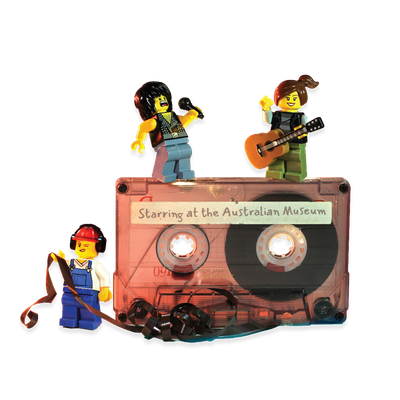Your search returned 109 results
By Page Type
By Tag
- All
- fish (966)
- blog (696)
- fishes of sydney harbour (401)
- First Nations (297)
- Blog (236)
- AMRI (169)
- archives (164)
- Eureka Prizes (145)
- Aboriginal and Torres Strait Islander (135)
- insect (126)
- Ichthyology (124)
- geoscience (109)
- minerals (102)
- climate change (98)
- podcast (94)
- Fish (91)
- Anthropology (89)
- International collections (80)
- Minerals Gallery (78)
- wildlife of sydney (78)
- Labridae (77)
- frog (73)
- gemstone (70)
- photography (65)
- history (63)
- Mollusca (60)
- gem (59)
- staff (59)
- Birds (56)
- Gems (56)
- Indonesia (56)
- education (55)
- shark (55)
- AMplify (54)
- people (53)
- earth sciences (50)
- past exhibitions (50)
- exhibition (49)
- Gobiidae (48)
- sustainability (46)
- Pomacentridae (45)
- Serranidae (44)
- lifelong learning (42)
- science (42)
- Earth and Environmental Science (41)
- Syngnathidae (41)
- Ancient Egypt (40)
- Bali (40)
- bird (40)
- dangerous australians (40)
-
Metamorphic processes
https://australian.museum/learn/minerals/shaping-earth/metamorphic-processes/Most minerals are only stable at particular temperatures and pressures, so changes in these result in the formation of new minerals.
-
Geological origin of gemstones
https://australian.museum/learn/minerals/gemstones/geological-origin-of-gemstones/Gemstones are formed below the Earth's surface and can sometimes show traces of other minerals, called inclusions.
-
Valuing gemstones
https://australian.museum/learn/minerals/gemstones/valuing-gemstones/Gemstones are valuable because they are a rare and desirable commodity. They also represent time and labour spent on cutting and presentation.
-
The Solar System
https://australian.museum/learn/minerals/shaping-earth/the-solar-system/The Solar System is dominated by the Sun and the planets that orbit around it.
-
Mineral groups
https://australian.museum/learn/minerals/what-are-minerals/mineral-groups/Minerals can be classified into distinct groups based upon similar atomic structure and/or chemical composition.
-
New Information from Old Specimens
https://australian.museum/learn/collections/natural-science/mineralogy/mineralogy-collection-new-information-from-old-specimens/In many ways the future and relevance of museum collections often depend on their past. Some specimens remain in the collections for a long time, sometimes over 100 years before they prove vital for current research projects.
-
The Sydney Basin
https://australian.museum/learn/minerals/shaping-earth/the-sydney-basin/The Sydney Basin is a major structural basin containing a thick Permian-Triassic (290 Ma - 200 Ma (million years old)) sedimentary sequence that is part of the much larger Sydney-Gunnedah-Bowen Basin.
-
Types of metamorphism
https://australian.museum/learn/minerals/shaping-earth/types-of-metamorphism/There are several different types of metamorphism, including dynamic, contact, regional, and retrogressive metamorphism, that form and shape rocks.
-
Fluorite
https://australian.museum/learn/minerals/gemstones/fluorite/Facts about Fluorite.
-
Labradorite
https://australian.museum/learn/minerals/gemstones/labradorite/Facts about Labradorite
-
Discover more
2025 Australian Geographic Nature Photographer of the Year
Special exhibition
Now open -
Discover more
Unfinished Business
Special exhibition
Opens 1 November -
Discover more
Wansolmoana
Permanent exhibition
Open daily -
Find out more
Burra
Permanent kids learning space
10am - 4.30pm![]()
-
Discover more
Minerals
Permanent exhibition
Open daily![]()




